#Empress consort of russia
Explore tagged Tumblr posts
Text










Empresses Consorts of the Romanov Family {03/16}: Maria Ilyinichna Miloslavskaya.
"Maria Ilyinichna was a younger daughter of the noble Ilya Danilovich Miloslavsky and Ekaterina Fedorovna Miloslavskaya. In 1647, tsar Alexis I of Russia reached the age required for marriage. The tsar was to choose his bride from a bride-show of hundreds of daughters of the nobility, who were summoned to the imperial court for selection. Maria, who was reportedly a beauty, was selected as the tsar's second choice (he had initially chosen Euphemia Fedorovna Vsevolozhskaya, but she was disqualified on charges of epilepsy). The wedding was conducted on 16 January 1648 in Moscow and is described as a happy one; the couple had 13 children, including Tsar Feodor III, regent Sophia and Tsar Ivan V. Tsaritsa Maria fulfilled her expected role both in regard to charity and religion, despite the fact that russian noblewomen were expected to live their lives in seclusion, with as little contact with men as possible. Maria died after having given birth to Eudoxia in 1669. When she died, it was first believed that her widower would never remarry."
Informations from Wikipedia
(movie: Sophia - 2016)
#tsarina#maria miloslasvkaya#more romanovs#facts#sophia 2016#my edits#my own#empress consort of russia#imperial russia#the romanovs#romanov family
11 notes
·
View notes
Photo

1860s Konstantin Makovsky (1839-1915), Portrait of Maria Feodorovna (Dagmar of Denmark) (1847-1928).
#1860s#painting#portrait#Konstantin Makovsky#dagmar of denmark#empress consort of russia#makovsky#maria feodorovna#jewels#princess dagmar of denmark#19th century#jewellery#jewelery
47 notes
·
View notes
Text

Empress Alexandra Feodorovna of Russia, consort of Emperor Nicholas I, with her eldest daughter, Grand Duchess Maria Nikolaevna, by Sokolov.
#empress alexandra feodorovna#grand duchess maria nikolaevna the elder#romanov#russia#sokolov#portrait painting
114 notes
·
View notes
Text
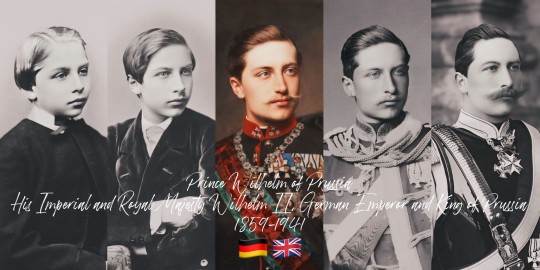
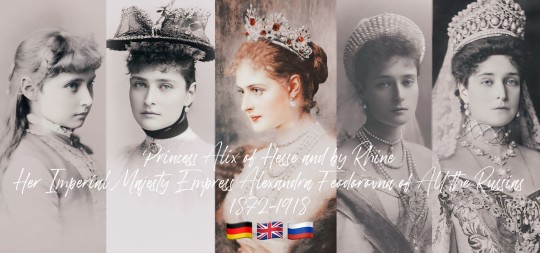

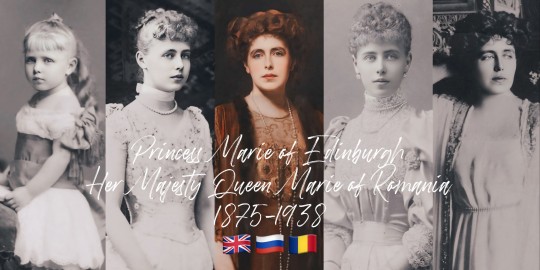

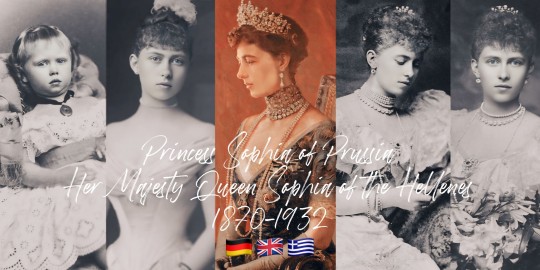
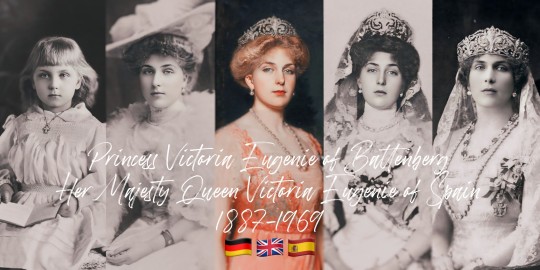

"The Monarchs of Queen Victoria’s Legacy"
Wilhelm II was the first of Queen Victoria's grandchildren to ascend to a throne, becoming German Emperor in 1888. His reign initiated the lineage of monarchs descended from Victoria. The last to be crowned was Marie of Romania in 1914, marking the end of an era for Victoria's royal progeny.
Queen Maud of Norway holds the distinction of having the longest tenure as Queen Consort among Queen Victoria's grandchildren, with a reign that spanned 33 years. Her time on the throne was characterized by a harmonious blend of British heritage and Norwegian culture, leaving a legacy of benevolence and cultural patronage. Conversely, Queen Sophia's role as Queen Consort of the Hellenes was the briefest, lasting just about 4 years due to the political upheavals of World War I and Greece's National Schism, which led to her husband's abdication. Despite the short span, her resilience and dedication to her royal duties remained unwavering.
The execution of Empress Alexandra Feodorovna was a deeply tragic event, reflecting the brutal reality of the Russian Revolution. On the night of 16-17 July 1918, she and her family were executed by Bolshevik revolutionaries in Yekaterinburg. Alexandra witnessed the murder of her husband, Tsar Nicholas II, before she herself was killed with a gunshot to the head. The violence of that night brought an abrupt and grim end to the Romanov dynasty, extinguishing the lives of the last imperial family of Russia in a stark and merciless manner. Her death marked the first among Queen Victoria’s crowned grandchildren. In contrast, Queen Victoria Eugenie of Spain lived through the upheavals of the 20th century, witnessing the restoration of the Spanish monarchy. She passed away in 1969, the last of Victoria’s crowned grandchildren, her life reflecting the dramatic changes of her time.
George V’s United Kingdom, a realm where tradition blends with modernity, continues to stand firm. The monarchy, a symbol of continuity, has weathered the storms of change, its crown passed down through generations, still reigning with a sense of duty and connection to the people.
Maud of Norway’s legacy endures in the serene beauty of Norway, where the monarchy remains a cherished institution. Her reign, characterized by a quiet strength and a nurturing presence, is remembered fondly, and the royal house she helped establish continues to flourish.
Margaret of Connaught’s Swedish monarchy, into which she married, stands resilient. Though she never became queen, her descendants uphold the traditions and values she embodied, maintaining the monarchy as a pillar of Swedish national identity.
Victoria Eugenie of Spain saw the Spanish monarchy navigate the tumultuous waters of the 20th century, enduring a republic and a dictatorship before being restored. Today, it stands as a testament to resilience, with her bloodline still on the throne, embodying the spirit of reconciliation and progress.
In stark contrast, the fates of other monarchies were marked by tragedy:
Wilhelm II witnessed the fall of his German Empire in the aftermath of World War I. His abdication marked the end of an era, and he spent his remaining years in exile, a once-mighty emperor without a throne, reflecting on the lost glory of his realm.
Sophia of Hellenes experienced the disintegration of the Kingdom of Greece amidst political upheaval. The monarchy, once a symbol of national unity, was abolished, leaving her and her family to face the harsh reality of a world that had moved beyond the age of empires.
Alexandra Feodorovna’s Russian Empire crumbled during the Bolshevik Revolution. The tragic end of the Romanov dynasty saw her and her family executed, their fates sealed by the tides of revolution that swept away centuries of monarchical rule.
Marie of Romania’s kingdom, once a beacon of hope in the aftermath of World War I, eventually succumbed to the forces of history. The monarchy was abolished after World War II, and the royal family faced the stark reality of a republic.
#wilhelm ii#Marie of Edinburgh#Marie of romania#George v#alix of hesse#alexandra feodorovna#Margaret of connaught#Margaret of Sweden#Victoria eugenie of Spain#Sophia of Prussia#Sophia of Hellenes#Sophia of greece#queen maud#princess maud of wales#Victoria eugenie of battenberg
47 notes
·
View notes
Text

✧.* ~ Three Generations of British Victorias ~ ✧.*
Queen Victoria of Great Britain and Ireland, 1819-1901
Victoria Princess Royal, Crown Princess of Prussia, Empress of Germany, 1840-1901
Princess Viktoria of Prussia, Princess of Schaumburg Lippe, 1866-1929
Princess Victoria of Wales, 1868-1935
Princess Victoria Melita of Edinburgh, Grand Duchess Viktoria Feodorovna of Russia, 1876-1936
Missing from photo:
Princess Victoria of Hesse and By Rhine, Marchioness of Milford Haven, 1863-1950
Princess Helena Victoria of Schleswig Holstein, 1870-1948
Princess Victoria Eugenie of Battenberg, Queen Consort of Spain, 1887-1969
✧.*
#british royal family#queen victoria#Victoria Princess Royal#crown Princess Victoria of Prussia#empress victoria of germany#prussian royal family#princess Viktoria of Prussia#princess Viktoria of Schaumburg lippe#Princess Victoria of wales#princess Victoria#princess Victoria Melita#grand duchess Viktoria feodorovna of Russia#princess victoria of hesse#marchioness of Milford haven#Victoria of Battenberg#Princess Victoria Eugenie#princess victoria eugenie of battenberg#queen victoria eugenie of spain#spanish royal family#hessian Royal family#princess Helena Victoria of Schleswig Holstein
28 notes
·
View notes
Text

Coronation of Tsar Alexander III and Empress Maria Fyodorovna of Russia, 1883
Artist: Georges Becker (French, 1846–1909
Date: 1888
Medium: Oil on canvas
Collection: Hermitage Museum, Saint Petersburg, Russia
Description
In 1881, Tsar Alexander II (1818-1881) died of injuries sustained in an assassination attempt, leaving the Russian throne to his second-eldest son, Alexander III (1845-94). The coronation of the new monarch and his consort, Empress Maria Fyodorovna (1847-1928), took place two years later on May 27 (May 15, Old Style), 1883 at the Assumption Cathedral of the Moscow Kremlin.
#painting#coronation ceremony#interior#assumption cathedral#moscow kremlin#russian culture#russian empire#russian history#balcony#men#women#costume#royal throne#tsar alexander iii#empress maria fyodorovna#george becker#french painter#french art#fine art#oil on canvas#oil painting#artwork#european art#19th century painting
18 notes
·
View notes
Text


Three Years Anniversary: Wilhelmina and Family, 1850.
Queen Wilhelmina with her husband Prince Leopold of Orange and Parma, alongside their seven children and children in laws.
This weekend was my three year anniversary of a Royal Sims account, so I have done another historical portrait to celebrate it! It has been an incredible experience over these last three years and I am so grateful for everyone I have met and worked with. I would like to thank all of my friends and followers for supporting me on this amazing journey!❤️ (tagged bellow)
Standing(L-R) Archduke Joseph of Austria, Prince Albert, Duke of Clarence, Princess Helena of Denmark, Duchess of Clarence, Karl-Frederick, Emperor of the Germans, Princess Leanor of Bavaria, Crown Princess of Corrilea, Prince Leopold of Orange and Parma, the Prince Consort, Crown Prince David of Corrilea, Frederich I, King of Württemberg, Prince Edward, Duke of Marlborough, Princess Beatrice of the United Kingdom, Duchess of Marlborough, and Grand Duke Sergei Nikolaevich of Russia.
Seated(L-R) Princess Louise, Archduchess Louise of Austria, Princess Sybil, Empress of the Germans, Queen Wilhelmina of Corrilea, Princess Victoria, Queen of Württemberg and Princess Catherine, Princess Royal, Grand Duchess Catherine Feodorovna of Russia.
Thank you @funkyllama @nexility-sims @royaltysimblr @trentonsimblr @bridgeportbritt @itsmelonsloth @thegrimalldis @wa-royal-tea @warwickroyals @the-royals-ts4 @armoricaroyalty @houseofwindensor @theroyalthrones @whitmoreroyals @empiredesimparte @royalhouseofcarrington @officalroyalsofpierreland @anachrosims @thebaillieroyals for creating a wonderful experience for me these past three years ❤️
#theroyalsofcorrilea#anniversary#ts4 royalty#ts4 royal family#sims 4 royalty#the sims 4#ts4 royal story#sims 4#sims 4 royal family#sims 4 royal simblr#sims 4 royal legacy
47 notes
·
View notes
Photo

Catherine the Great
Catherine II of Russia (Catherine the Great) was empress regent of Russia from 1762-1796. She was born in Prussia to Prince Christian August of Anhalt-Zerbst (1690-1747) and Princess Johanna Elisabeth of Holstein-Gottorp (1712-1760), and although her family was noble, they were not wealthy. She married the future Russian Tsar, Peter of Holstein-Gottorp (1728-1762), in 1745 in St. Petersburg.
Peter was crowned Emperor Peter III of Russia in 1762, with Catherine becoming empress consort. However, Peter and Catherine's marriage and joint reign were not happy, and Catherine grew to hate all that Peter stood for. It was not long before Catherine began seeking support elsewhere and sought to overthrow Peter. With the Russian army's and her supporters' help, Peter was arrested and forced to sign an abdication form. He was assassinated a short time after, paving the way for Catherine to become the sole ruler of Russia.
Catherine was formally crowned empress regent on 22 September 1762, as Catherine II of Russia. During her lengthy reign, she transformed Russia's education system, the arts and the Russian economy and ushered in the age of the Russian Enlightenment.
Early Life
Catherine was born Sophie Friederike Auguste von Anhalt-Zerbst-Dornburg on 2 May 1729 in Stettin, Prussia (modern-day Szczecin, Poland), to Christian August, Prince of Anhalt-Zerbst and Princess Johanna Elisabeth of Holstein-Gottorp. She had two younger brothers and a younger sister. One of her younger brothers, Wilhem Christian, died at 12 from scarlet fever. Catherine was said to have had a closer relationship with her father than her mother.
Although they did not have much money, Catherine was educated by French tutors and a French governess, as was befitting a child of noble birth. Her governess, Elizabeth (Babet) Cardel, greatly influenced her, with Catherine referring to Elizabeth as the kind of governess that every child should have. Catherine was a happy child with a lot of energy. She played games with the local children and enjoyed taking command. Her childhood was relatively uneventful, with Catherine stating there was "nothing of interest in it."
Continue reading...
28 notes
·
View notes
Text
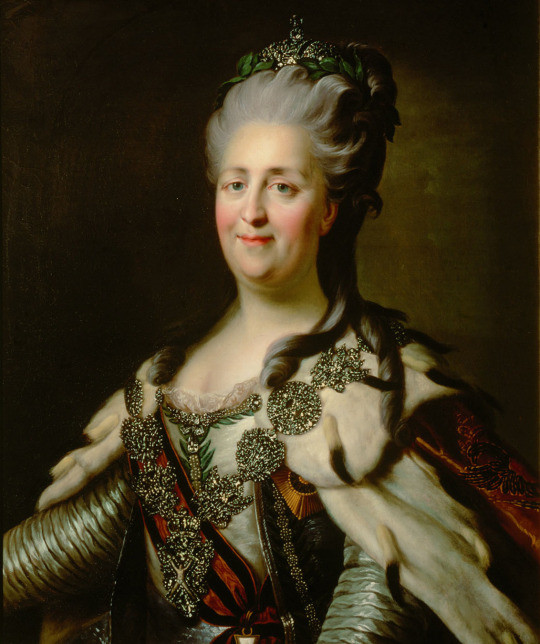
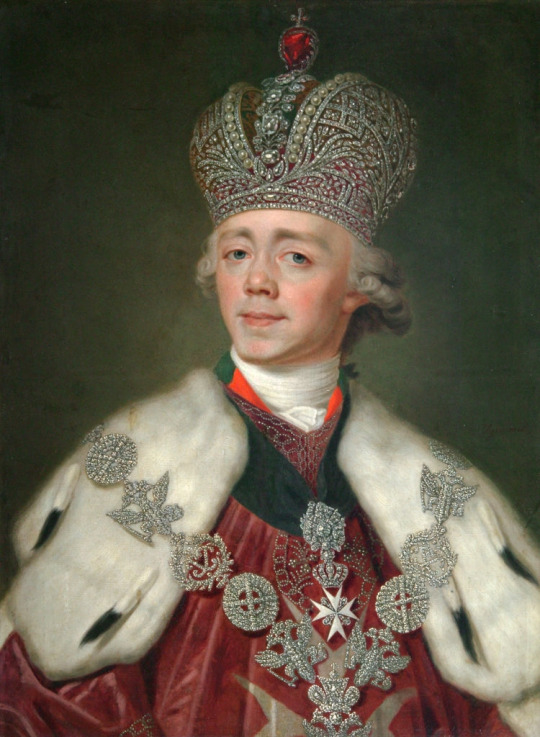


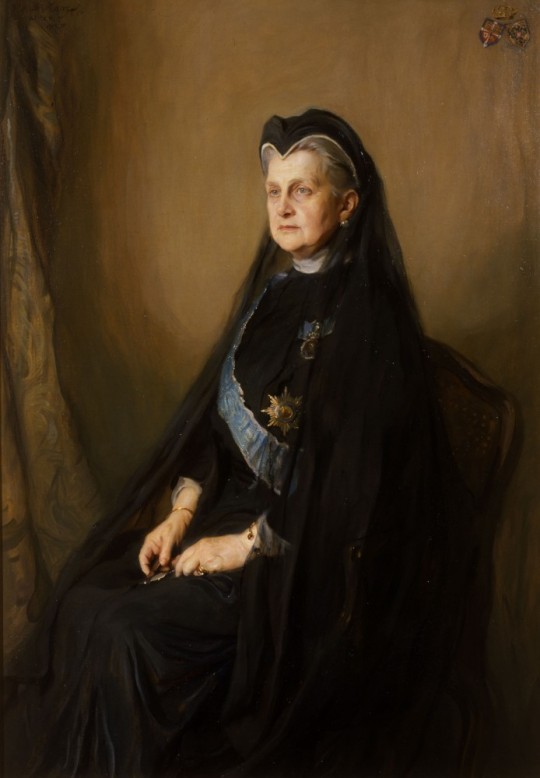

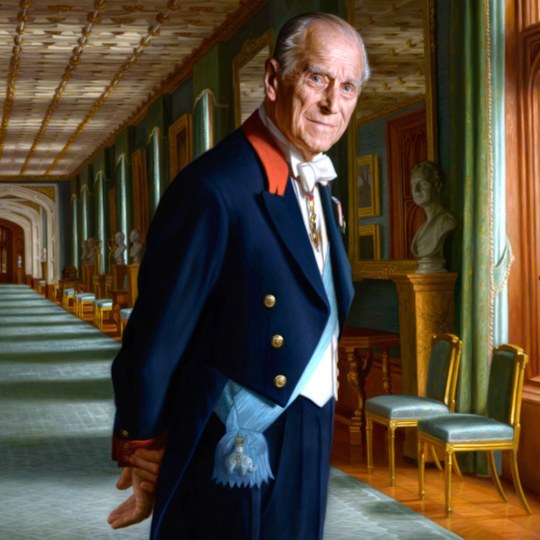

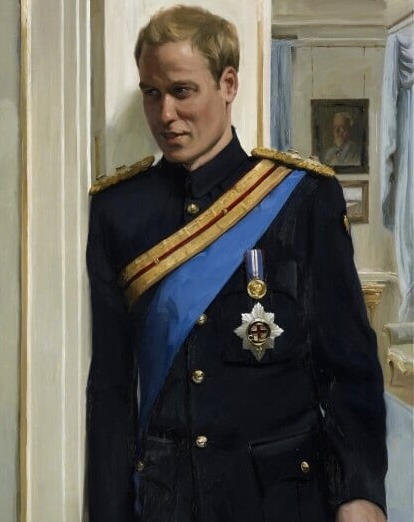
Catherine II the Great, Empress of Russia: 6th great-grandmother of The Prince of Wales. Catherine II of Russia -> Paul I of Russia -> Nicholas I of Russia -> Grand Duke Konstantin Nikolayevich of Russia -> Olga Constantinovna, Queen consort of Greece -> Prince Andrew of Greece and Denmark -> Prince Philip, The Duke of Edinburgh -> King Charles III of GB -> The Prince of Wales.
#ktd#british royal family#prince william#brf#throwback#king charles lll#prince philip#catherine the great#the great#empress of russia#russian imperial family#tsar Paul I#Paul I#greek royal family#art#art history#history#european royalty
56 notes
·
View notes
Text










One of the buildings to which Paleizenplein ("palaces square") in Brussels owes its name is the Palace of the Academies, which currently houses most of Belgium's academies.
From 1828 to 1830 it was the home of Crown Prince William of Orange-Nassau and his consort Anna Paulowna, daughter of Tsar Paul and Grand Duchess of Russia whrn Belgium (or Southern Netherlands) were part of the United Kingdom of the Netherlands which was created after the battle of Waterloo in 1815. Later It was also temporarily the home of Crown Prince (of Belgium which was established in 1830) Leopold, at that time titled Duke of Brabant, to which Hertogsstraat (" Duke's street") refers. The palace is a late but pure example of neoclassicism, the palace style of the Enlightenment. This architectural gem was drawn according to pure geometric proportions, Renaissance symmetry and axiality.
The neoclassical building was built between 1823 and 1828 on the site of the Park Abbey refuge house. The state architects Charles Vander Straeten and Tieleman Franciscus Suys also carried out one of the renovations of the adjacent Royal Palace of Brussels in the same period. It was financed to the amount of 1,215,000 guilders with resources from the United Kingdom of the Netherlands and on behalf of William I. The palace was furnished for his son, Crown Prince Willem and his Russian wife Anna Pavlovna. On the night of September 25 to 26, 1829, the palace was broken into. The thieves stole Anna Pavlovna's jewelry from her bedroom and escaped with it.
After the Belgian Revolution, the palace came under sequestration. An army regiment were given shelter there. It would take until 1842 before a compromise was found. The building was transferred to the Belgian state and the sumptuous contents went to the Kingdom of the Netherlands. The contents were transferred to the Kneuterdijk Palace and after the death of William II to the Noordeinde Palace, where many pieces can still be admired.
From 1848 to 1852, the palace was the location of the first regiment of Jagers-Carabiniers. King Leopold II refused to move into the building that was offered to him in 1853. It was decided to use it for ceremonies and celebrations. The interior was renovated under the supervision of architect Gustave De Man. However, in 1862 the Museum of Modern Art was housed in the palace, pending the completion and furnishing of the Royal Museums of Fine Arts of Belgium. It would still house works of art until the Royal Academies of Belgium were allowed to settle there (royal decree of April 30, 1876).
Interior:
In the monumental stairwell hangs a portrait of Empress Maria Theresa of Austria, in honor of the original founder of the Académie Impériale et Royale des Sciences et Belles-lettres de Bruxelles in 1772. The Throne Room (not to be confused with the Belgian Throne Room in the adjacent Royal Palace of Brussels) is the original banquet room of the palace. Adjacent were the private rooms of William II, of which, among other things, the toilet with enormous wall mirror of his wife Anna Pavlovna of Russia has been preserved. The large Marble Hall on the second floor is covered with Belgian brown marble and white marble from Carrara. The parquet, constructed with oak and tropical wood (rosewood and amaranth wood), has a motif of small tree leaves. The vault is covered with gold leaf and tympanums. The hall has excellent acoustics and is regularly used for concerts. In addition, there are a number of smaller rooms, including the Maria Theresa Hall when the Academy classes meet separately, and the Leopold Hall and Albert Hall for smaller committee meetings. The old permanent secretary's office also radiates grandeur. The building also contains about sixty smaller and larger office spaces.
#neoclassical#neoclassico#neoclassicism#architectural history#architecture#historic buildings#belgium#europe#historical interior#bruxelles#brussels#brussel#bruselas#marble#gold#netherlands#palace#palaces#chandelier#lustre#history#historical#palazzo#palais#floors#parquet flooring#wood flooring#flooring
11 notes
·
View notes
Text
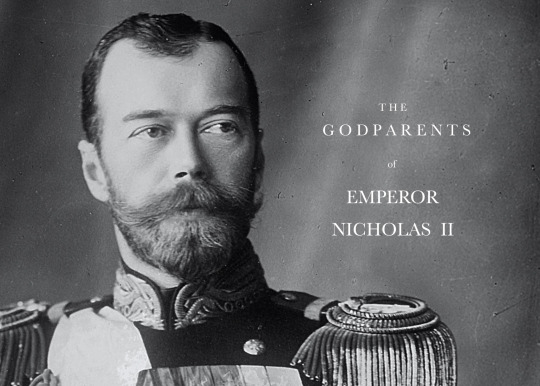
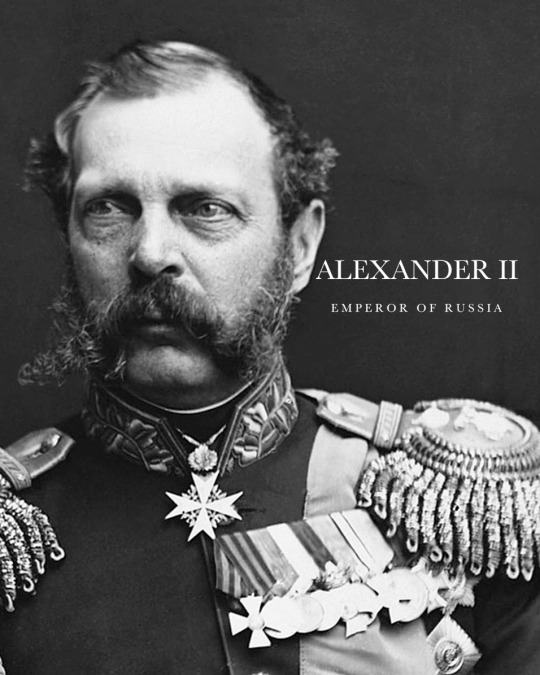




GODPARENTS OF NICHOLAS II
Born during his grandfather's reign on 18 May (New Style) 1868 at the Alexander Palace, Tsarkoe Selo in Saint Petersburg. He was the eldest son of Alexander III and his wife Maria Feodorovna (then, the Tsarevich and Tsarina of Russia). He was christened on 1 June at the Chapel of the Resurrection of the Catherine Palace at Tsarskoe Selo, by the confessor of the imperial family, protopresbyter Vasily Borisovich Bazhanov. His godparents were:
ALEXANDER II, EMPEROR OF RUSSIA - his paternal grandfather, the Russian Emperor stood as one of the godparents. He became the Emperor of All Russia in 1855. Alexander’s most significant reform as emperor was the emancipation of Russia’s serfs in 1861, for which he is known as Alexander the Liberator. He was assassinated in 1881 when the young Nicholas was only 12 years-old, to which he became the heir apparent upon his death.
PRINCESS MARIE OF HESSE AND BY RHINE, EMPRESS MARIA ALEXANDROVNA OF RUSSIA - his paternal grandmother, the consort of Emperor Alexander II, was another of his godparents. Known for her intellect, she was one of the founders of the Russian Red Cross Society. However, she suffered from tuberculosis from 1863 and spent long stays in southern Europe to avoid harsh winters. Although she and her husband were unofficially separated sometime after the death of their eldest son, Maria was treated with respect and love by her surviving family. Maria passed away from illness when the young Nicholas was still a child.
PRINCESS LOUISE OF HESSE-KASSEL, QUEEN CONSORT OF DENMARK - his maternal grandmother was listed as one of his godparents. Louise became the Queen consort of Denmark upon her husband's - King Christian IX - accession in 1863, just few years before her grandson Nicholas' birth. She, herself, was a niece of another King of Denmark (Christian VIII). The great dynastic success of Louise's six children was to a great extent a result of Louise's own ambitions - through them, she was a grandmother of not only the future Tsar of Russia (Nicholas II), but also that of King George V of the United Kingdom; King Constantine I of Greece; King Christian X of Denmark, and King Harken VII of Norway.
GRAND DUCHESS ELENA PAVLOVNA OF RUSSIA - his great-great-aunt, the wife of the late Grand Duke Michael Pavlovich, was one of his godparents. Born as Princess Charlotte of Württemberg, she became a close friend of his grandmother the Empress Maria Alexandrovna, and was known as an intellectual. She was also considered the most exceptional woman in the imperial family since Catherine the Great.
KING FREDERICK VIII OF DENMARK - then, the Crown Prince, his maternal uncle stood as one of his godparents. During the long reign of his father, he was largely excluded from influence and political power. Upon his father's death in 1906, he acceded to the throne at the advanced age of 62. In many ways, Frederick VIII was a liberal monarch who was much more favorable to the new parliamentary system introduced in 1901 than his father had been, being reform-minded and democratically inclined.
Source
87 notes
·
View notes
Text










Empresses Consorts of the Romanov Family {02/16}: Eudoxia Streshneva.
"Michael married twice. His first wife was Princess Maria Vladimirovna Dolgorukova, of Rurikid descent, but she died only four months into the marriage. The following year, 1625, he married Eudoxia Streshneva, the daughter of a boyar who had gone off to serve in the tsar's army and a mother who died young, leaving her a virtual orphan. Raised by a wealthy relative in the tsar's court in Moscow, she attracted Michael's attention with her beauty, modesty, and pleasant demeanor. He was also moved by her plight as an orphan and refused to change his mind despite his family's - specifically his mother's - objections. Together, he and Eudoxia would have ten children; four would survive to adulthood, and one would claim the throne."
The Tsars | Alexander Ivanov
(Movie: Godunov - 2018)
#Eudoxia Streshneva#tsarina#romanovs#romanov family#imperial russia#more romanovs#the romanovs#my own#empress consort of russia
10 notes
·
View notes
Note
There’s a tendency among the fans to treat succession as a set of ironclad rules, at least, whatever version of succession they subcribe to. But the reality is that succession is largely a matter of will to power. Any claim can be justified with right of conquest/might makes right. Various characters might have claims that make it easier for them to persuade others to support their grab for power, but they all understand on some level that the rules aren't real. Words are wind, as they like to say. To quote Petyr Baelish, it’s treason “only if we lose.”
Right of conquest only works if you win. The problem with a claim based solely on this is obvious (hence why even Robert/Jon Arryn came up with a thin pretext of Robert’s Targaryen blood in addition to this): there’s no inherent normative reason anyone else shouldn’t do it or challenge your claim immediately by trying to kill/overthrew you. The Targaryens got away with this for a while because no one else could do it both due to dragons and other barriers, long enough for their system to be fixed. (In their case, they had an advantage since the entire concept of the united Seven Kingdoms was their creation).
For instance, Catherine the Great, an impoverished Prussian princess, had come to Russia in the first place to be empress consort and mother to the next heir. She had no legal claim to the throne. Aided by her lover Grigory Orlov and his powerful family, she staged a coup just six months after her husband, Peter III, took the throne. The bloodless shift in power was so easily accomplished that Frederick the Great of Prussia later observed, “[Peter] allowed himself to be dethroned like a child being sent to bed.” Catherine not only overthrew her husband but usurped the throne from her son, ruling for 34 years as empress in her own right even though legally, she could only be a regent until her son came of age. Yet you’d be hard pressed to find many people calling her a “usurper” because Catherine knew how to get and maintain power, and she kept the most powerful people in her empire in check. She surrounded her son with spies in order to prevent him from staging a coup and taking the throne that was rightfully his. She also manipulated influential men to keep them from allying with Paul (who didn’t inherited his mother’s political acumen).
This is in response to this recent ask about usurpation and "legitimacy".
And yes, even GRRM says that in both ASoIaF and real life medieval EU, these "laws" could be distorted or ignored by lords themselves when they had the means and will to do so in So Spake Martin:



#asoiaf asks to me#fiction vs reality#european history#grrm#westeros succession#catherine the great#russian history#asoiaf writing#hotd fandom#fandom critical#hotd comment#asoiaf comment#asoiaf#agot#westerosi history
11 notes
·
View notes
Text


"From Berlin, we went through Weimar to Frankfurt am Main, where the first joyful event was meeting Sasha's lovely bride. It was an important moment in my life when I pressed my new daughter to my heart. The first impression made by her, was very good, very favorable for her. She has everything to please, the deposit to everything that makes up a beautiful person, and in time she will, in all probability, develop a beautiful, noble posture. She is even more beautiful than I imagined."
- Empress Alexandra Feodorovna of Russia on her future daughter-in-law, Princess Marie of Hesse (later Empress Maria Alexandrovna, consort of Emperor Alexander II).
58 notes
·
View notes
Text

"The Empress Marie Feodorvna, Alexander the Third’s consort, was a Danish Princess, and a sister of Queen Alexandra. She embraced the Orthodox Greek Church upon her marriage, and was a keen upholder of its traditions. I remember being terribly disillusioned by my first glimpse of the Empress. Childlike I had expected her to wear a golden crown, and the sight of her minus this Imperial ornament disappointed me bitterly. It was some time -before I could be consoled. The Empress was always very kind and gracious to the pupils of the Imperial Ballet, and when we performed in the Private Theatre at the Winter Palace, or at the Mariinsky Theatre, St. Petersburg, would reward us with boxes of chocolates and sweets.
Her Imperial Majesty had the most beautiful hands I have ever seen. They were so soft, and most delicately perfumed. We children regarded it as a special treat when we were allowed to kiss them, and we would surreptitiously inhale the fragrance of her delicious perfume as we did so. I have never smelt any perfume like it since, and my memories of the Empress Marie Feodorvna will always be associated with the exquisite garden-like fragrance that seemed to be wafted. with every movement she made. When she died in 1928, although she had left Russia nine years previously, there was a general feeling of grief throughout the Fatherland. She was a woman of remarkable energy, and she expended it in helping her husband and later her son, the Tsar Nicholas the Second, who was destined to be the last of the reigning House of Romanoff".
Lydia Kyasht "Romantic recollections"
2 notes
·
View notes
Text

“In the Crown S50, Queen Mary refusing to take the Romanovs is complete fiction. It was King George V who made the decision on the advise of his Private Secretary Lord Stamfordham. I know the Crown takes creative liberties but the assumption of the rivalry between Mary and Alix feels completely shoehorned and out of place. Now if you want female rivalry storyline during between the Windsors and the Romanovs during the same timeframe, Maria Feodorovna (Empress Dowager of Russia) felt inferior to her sister Alexandra (Queen-Consort of the UK) after her exile to the UK. Maria went from an Empress of all Russia to being an exiled royal who felt second place from her popular sister. Maria later left the UK to live in Denmark.” - Submitted by Anonymous
30 notes
·
View notes